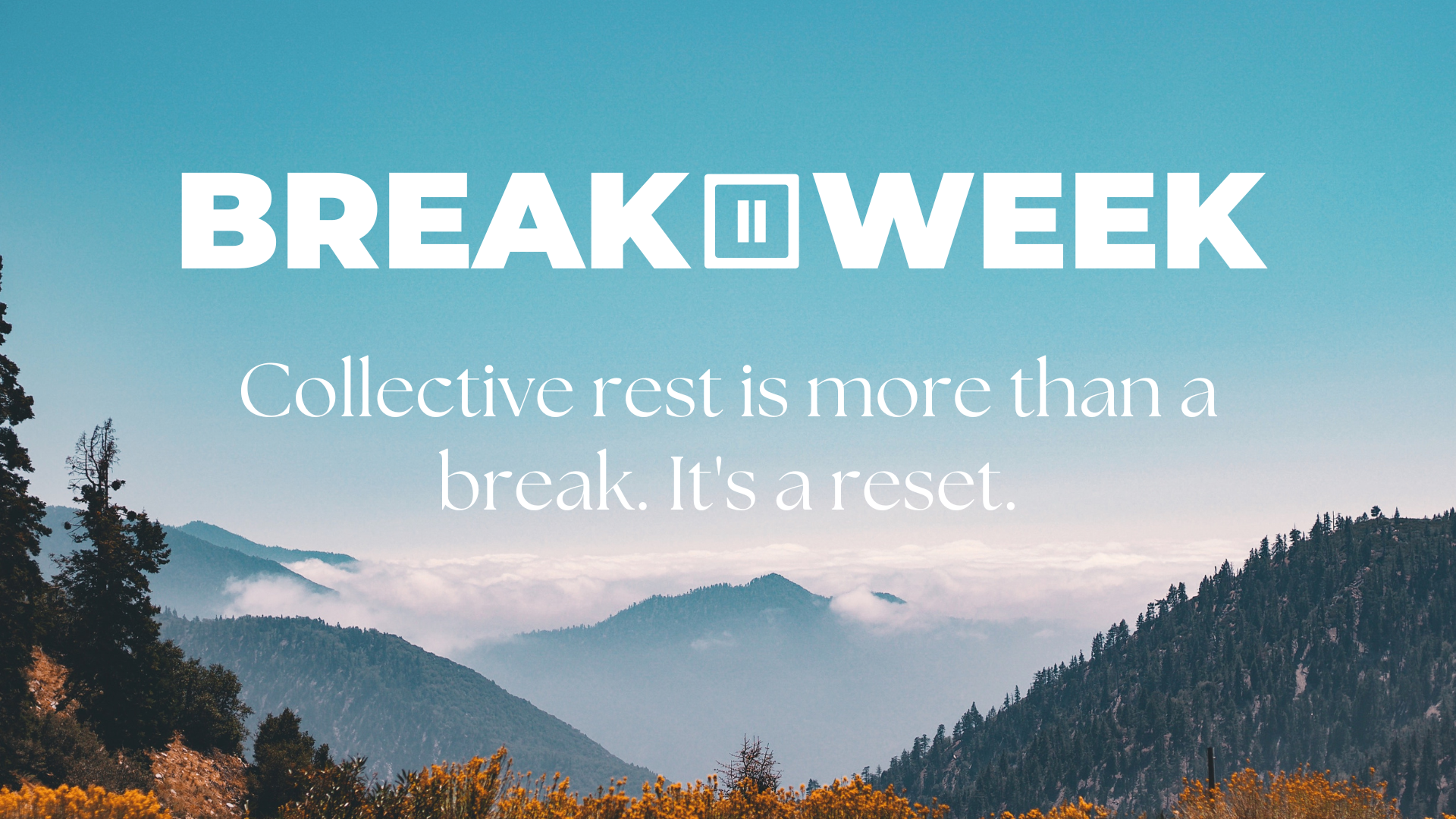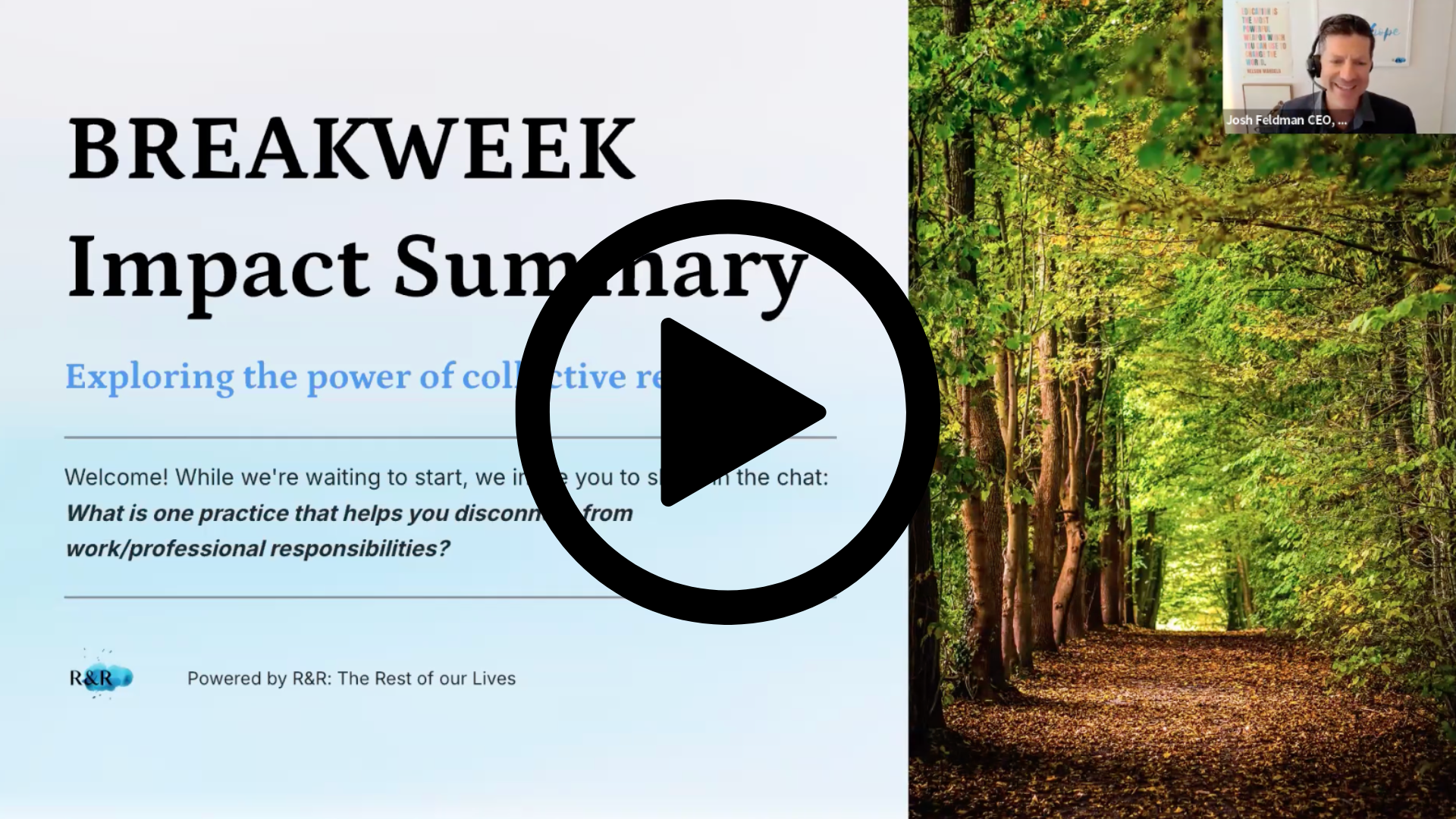Rest Is a Strategy: What We Learned from BREAKWEEK
Fill in your email address below to access the BREAKWEEK Impact Summary:
Burnout is no longer a personal problem. It’s a workplace crisis — and nowhere is that more true than in the nonprofit sector.
According to recent data, 76% of nonprofit professionals report experiencing burnout, driven by chronic stress, emotional labor, and the relentless urgency of mission-driven work. In a sector that’s deeply committed to care, we rarely extend that care inward — to our staff, our leaders, and ourselves.
That’s why we created a pilot grant initiative called BREAKWEEK.
What is BREAKWEEK?
BREAKWEEK is a one-week, organization-wide pause — a collective break designed to help teams reset, recharge, and return stronger. It’s not just a perk. It’s a structural intervention. Everyone disconnects at the same time. No emails. No meetings. No checking in.
Why? Because rest works better when it’s shared, normalized, and protected.
BREAKWEEK Pilot
In August 2024, R&R launched a BREAKWEEK pilot with 15 U.S.-based nonprofit organizations. Each grantee received:
A $5,000 grant
A custom implementation guide
Executive coaching and peer learning
And access to a national community testing out what happens when rest is built into the system
After the break, we surveyed 270 employees — and 78% responded. What we heard was clear, powerful, and deeply moving.
Impact at a Glance
The results of the pilot speak for themselves:
✅ 99% of participants had a positive or very positive experience
✅ 92% reported reduced stress or burnout
✅ 91% want BREAKWEEK to return next year
✅ 71% said their productivity improved after returning to work
The qualitative stories behind these numbers were just as compelling:
“I finally slept. For real. For the first time in months.”
“I came back with clarity and more creative ideas than I’ve had in a while.”
“Knowing everyone was off made it easier to truly disconnect — no guilt, no fear of missing out.”
This wasn’t just about feeling better. It was about working better, thinking more clearly, and building trust across organizations.
What Got in the Way?
Even with strong results, some barriers emerged:
Compressed workloads before the break caused pre-BREAKWEEK stress
Some staff struggled to re-orient after returning
Executives and long-tenured employees were less likely to fully disconnect
And external partners (like funders or clients) weren’t always aligned, creating uneven expectations
But nearly no one reported increased stress after the break, and that is critical.
What Makes BREAKWEEK Work?
We found that BREAKWEEK is most successful when rest is:
🟢 Collective – Everyone steps away together, so no one feels left behind.
🟢 Protected – No meetings, no silent expectations, no inbox creep.
🟢 Psychologically safe – Staff need to know they can unplug without judgment or punishment.
When rest is built into culture — not treated as an exception — it becomes real.
Curious the difference between collective rest vs. individual PTO?
This isn’t a case of either/or. Individual PTO is crucial as it offers flexibility and autonomy. But it often relies on self-advocacy and can be unevenly used.
Collective rest fills in the gaps. It removes guilt, reinforces equity, and gives teams a shared moment to reset. When done together, rest becomes a cultural norm, not a personal negotiation.
Together, the two form a powerful foundation for healthier, more resilient workplaces.
A Call to the Sector
We believe BREAKWEEK should be the norm, not the exception. Imagine a nonprofit landscape where teams regularly pause together, and where recovery isn’t reactionary, it’s built into the rhythm of the year.
With thoughtful planning and inclusive design, collective rest can become a pillar of sustainability. Not just for people, but for the organizations and missions they serve.
What’s Next
Applications for Round 2 of BREAKWEEK grants open on August 11! Sign-up for our mailing list to be notified as soon as the applications go live.
👉 And if you’re already thinking about how to bring collective rest to your team, here’s what we recommend:
Talk about it openly
Build supportive structures
Lead by example
And most importantly, protect the time like it matters. Because it really does.


